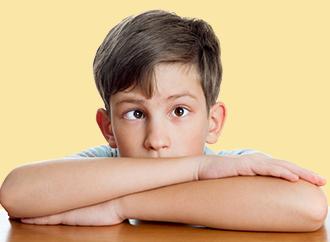
Treatment of Strabismus
How is Strabismus Diagnosed?
What is an inspection?
The relationship of both eyes with each other is examined while the patient is looking straight ahead. In addition, it is examined whether eye movements are compatible when looking to the right, left, upright, up left, down right, and left..
What is the light test?
The doctor points a small flashlight at the patient's eyes from a distance of approximately 30-35 cm and across from the patient. While the patient looks at this light, he watches the light reflection in his cornea. Normally, these reflections should be symmetrical and in the middle of the pupil in both eyes. If the light reflection in one of the eyes is not in the center of the pupil, the presence of strabismus is detected. This method, called the "Hirschberg test", is a rough examination and does not make a definitive diagnosis. The patient should also be evaluated while looking at a distance (approximately 5 cm away from a picture or object).
What is an eye closure test?
While the patient is looking at a point, the doctor closes one eye and watches the movement of the other eye. When the intact eye is closed, the exposed eye will be fixed, so a movement is observed according to the type of sliding (the eye that slides in will move outward to come to the middle). This test can be done alternately between the two eyes so that bilateral (alternate) strabismus can also be recognized.
How is strabismus treated?
The treatment aims to preserve vision, bring the eyes back to a parallel position, and provide binocular vision. The age of onset of the slide, whether it is in both eyes or one eye, and coexisting refractive errors are important in determining the type of treatment. In the treatment, glasses, eye exercises, prismatic glasses, botox injections into the extraocular muscles, or surgery are performed.
It is very important to correct the refractive error with glasses treatment first in a child with a slidding eye and eye disorder. Many slide types fall into the group called accommodative (correct with glasses) strabismus. With the correction of the child's eye defect, that is, with the use of glasses, the slide disappears (when the child wears glasses, the eyes come to the midline), but when the glasses are removed, the eyes slide again. The treatment of this type of strabismus is to use glasses. Surgery is not performed in this group of patients.
In a group of strabismus, using glasses due to eye disorder does not change the angle of strabismus. Their treatment approach is surgery. It should be known that if the child wears glasses before the operation, they will continue to wear them after the operation. Strabismus surgery is mostly performed under general anesthesia. This surgery, like all surgeries, has complications such as bleeding and infection. However, strabismus surgery is a reliable and accepted method of treatment and has been practiced for over a century.
The diagnosis and treatment of strabismus should be done by a specialist doctor and the treatment should be completed before the age of 7. Even if there is no complaint or finding, every child should be examined at least once before primary school age. Ideally, this examination should be done at the age of 3-4 years.
How is an orthoptic treatment performed in strabismus?
Orthoptic treatments are the physical treatment of the eye muscles. It is applied to strengthen some muscles and the ability to see with both eyes. Strengthening the ability to see with both eyes fixes or gives a sense of depth. This function of our eyes is very important in our daily life as well as keeping the eyes parallel. It allows us to be more comfortable and successful while driving, and doing sports that require distance and time adjustment such as basketball and tennis.
How is a surgical treatment applied in strabismus?
Congenital slides are those that do not usually require glasses and need to be operated on in the early period (6 months – 1 year). The vast majority of eye slides occur around the age of 2-3 years and can usually be completely corrected with glasses. Surgical treatment is required for sliding that does not improve even though glasses are worn. Strabismus surgeries are mostly performed under general anesthesia. Anesthesia is performed by a doctor who specialized in pediatric anesthesia. With early diagnosis and treatment in strabismus, lazy eye syndrome can be prevented and 3-dimensional vision can be achieved. For this reason, every child with suspected strabismus should be taken to a strabismus specialist ophthalmologist before they reach a certain age.
Can botox be used in the treatment of strabismus?
Botulinum Toxin (BOTOX) can also be applied in some strabismus treatments. Botox is effective and can be used therapeutically in patients with strabismus due to stroke, in patients who have undergone surgery but not fully recovered, and in patients with a slide in the eye due to goiter disease. There is usually double vision in sudden slides due to paralysis and it is a very difficult situation for the patient. The general tendency in this type of strabismus is to wait 6-8 months, but botox can be applied to reduce double vision during the waiting period. Complete recovery is possible with the initiation of treatment immediately after the strabismus appears.
Prepared by the Dünyagöz Hospital Editorial Board.
*The content of this page is for informational purposes only. See your doctor for diagnosis and treatment.
Last Update Date: 05.02.2022






